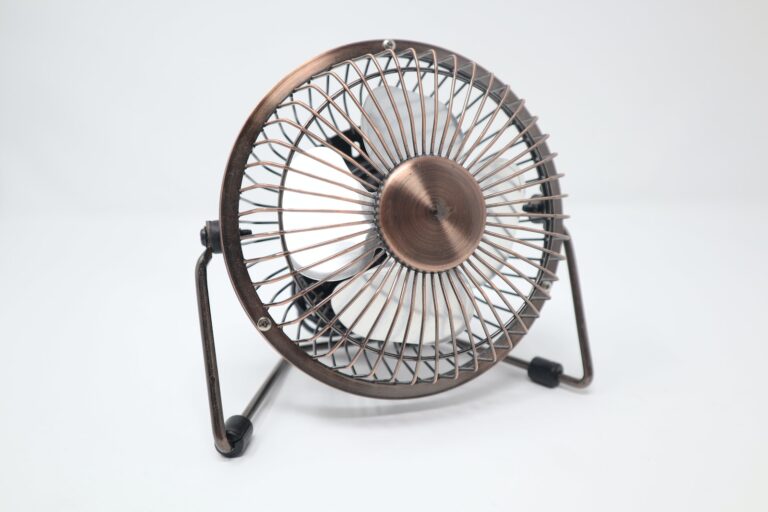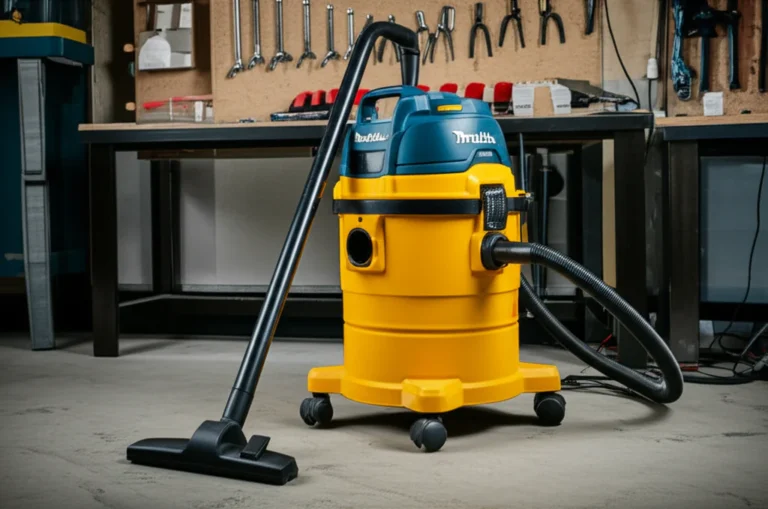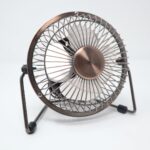Support our educational content for free when you purchase through links on our site. Learn more
Are All Portable Air Conditioners Loud? 7 Truths You Need to Know (2025) ❄️
If you’ve ever tried to enjoy a cool breeze from a portable air conditioner (PAC) only to be greeted by a noisy roar, you’re not alone. Many people wonder: Are all portable air conditioners loud by nature? The answer might surprise you! While it’s true that PACs tend to be noisier than other cooling systems, advances in technology and smart design have brought us models that whisper rather than roar.
In this article, we’ll unpack the real reasons behind portable AC noise, reveal which brands lead the charge in quiet cooling, and share expert tips to tame your unit’s volume. Curious about how a tiny personal AC can operate at just 42 decibels? Or whether dual-hose designs are louder than single-hose? Stick around — we’ve got all that and more, including a detailed noise comparison chart and maintenance hacks that can save your sanity this summer.
Key Takeaways
- Not all portable air conditioners are loud; noise levels typically range from 42 to 60 decibels depending on model and setup.
- Compressor and fan design are the biggest noise contributors, but inverter technology and dual-hose systems help reduce sound.
- Proper placement and regular maintenance can significantly lower noise and improve efficiency.
- Leading quiet brands include LG, Midea, Whynter, Honeywell, and Coolzy — some models operate as quietly as a refrigerator.
- Beware of marketing buzzwords like “silent” — always check the actual decibel rating before buying.
- For a peaceful night, use sleep modes and consider soundproofing tips to soften the hum.
👉 Shop Quiet Portable Air Conditioners:
- LG: Amazon | Walmart
- Midea: Amazon | Midea Official Website
- Whynter: Amazon | Whynter Official Website
- Honeywell: Amazon | Honeywell Store
Table of Contents
- ⚡️ Quick Tips and Facts
- The Evolution of Portable Cooling: From Roaring Relics to Whisper-Quiet Wonders 🕰️
- Are All Portable Air Conditioners Loud? The Truth Unveiled! 🤫
- Deciphering the Decibels: What’s ‘Loud’ Anyway? 🔊
- The Usual Suspects: What Makes a Portable AC Roar? 🦁
- Beyond Annoyance: How Portable AC Noise Impacts Your Well-being 😴
- The Quest for Quiet: Our Top Picks for Serene Cooling 🏆
- Taming the Beast: Your Guide to a Quieter Portable AC Experience 🛠️
- Busting the Buzz: Portable AC Noise Myths Debunked! ❌
- Conclusion 🎉
- Recommended Links 🔗
- FAQ 🤔
- Reference Links 📚
Body
Welcome back to the Quietest™ labs, where we pursue peace and quiet with the tenacity of a librarian in a rock concert. Today, we’re tackling a question that plagues many a sweaty brow in the summertime: Are all portable air conditioners loud? You’ve seen them, you’ve heard them, and maybe you’ve even cursed them in the dead of a hot, sleepless night. But is that roar an unavoidable feature? Let’s dive in, shall we?
⚡️ Quick Tips and Facts
Before we get into the nitty-gritty, here are some cool, quick-fire facts to get you started:
- The “Loudness” Range: Most portable air conditioners (PACs) operate somewhere between 50 to 60 decibels (dB). To put that in perspective, a quiet library is about 30 dB, a normal conversation is around 60 dB, and a lawnmower can hit a deafening 90 dB. So, your average PAC is like having a constant, moderate conversation in the room.
- Is 52 Decibels Loud? It depends! While 52 dB is quieter than many models, its perceived loudness can be affected by room size and personal sensitivity. For a deep dive, check out our article: Is 52 Decibels Loud for an Air Conditioner? The Truth Revealed! 🔊 (2025).
- Not All PACs Are Created Equal: ✅ There’s a world of difference between a budget, single-hose unit and a high-end, dual-hose inverter model. Some modern units can operate at levels as low as 42-44 dB, which is closer to the hum of a refrigerator.
- Size Matters (BTU): A unit with a higher BTU (British Thermal Unit) will cool a larger space but often comes with a bit more noise. Choosing the right size for your room is crucial for both efficiency and sound levels.
- Maintenance is Key: ❌ A dirty filter makes your AC work harder, which means more noise and less efficiency. Regular cleaning is your best friend for a quieter experience.
- Placement is Paramount: Sticking your PAC in a corner or on a hardwood floor can amplify vibrations and sound.
The Evolution of Portable Cooling: From Roaring Relics to Whisper-Quiet Wonders 🕰️
Remember those first portable ACs? They were clunky, beige behemoths that sounded like a 747 was preparing for takeoff in your living room. They did the job, sure, but at what cost to your sanity? Here at Quietest™, we’ve seen (and heard) it all. The evolution of these machines is a testament to consumer demand. People wanted to be cool, not constantly reminded that a powerful machine was battling the heat.
Manufacturers listened. They started investing in technologies to hush the hum. Compressors, once the primary culprits of the cacophony, were redesigned. Fan blades were engineered for stealthier airflow. Brands began to compete not just on cooling power, but on quiet operation, leading to the sophisticated Quiet Home Appliances we see today. It’s been a journey from roaring relics to the whisper-quiet wonders now on the market.
Are All Portable Air Conditioners Loud? The Truth Unveiled! 🤫
So, let’s get to the heart of the matter. The short answer is no, not all portable air conditioners are loud. But the longer, more helpful answer is that they are inherently one of the noisier types of air conditioners because all their working parts—including the compressor—are in the room with you. Unlike a split system where the noisy compressor lives outside, a PAC has nowhere to hide its sound-producing components.
However, the industry has made massive strides. While a study of popular models showed a noise range from 44 dB to 64 dB, the average is around 54-56 dB. The quietest models are now significantly less intrusive than their predecessors. The perception of “loud” is also highly subjective. A steady hum that one person finds soothing, another might find maddening. The key is understanding what the numbers mean and what factors create the noise in the first place.
Deciphering the Decibels: What’s ‘Loud’ Anyway? 🔊
Decibels (dB) are the units we use to measure sound intensity, but the scale is a bit tricky. It’s logarithmic, which means that for every 10 dB increase, the sound intensity increases tenfold. A 3 dB increase is actually a doubling of the sound’s loudness!
To give you a real-world feel, here’s a handy chart:
| Sound Source | Decibel Level (Approx.) | Our Take |
|---|---|---|
| 🤫 A Whisper | 30 dB | Barely there. |
| 📚 Quiet Library | 40 dB | The gold standard for peace. |
| ❄️ Quietest Portable ACs | 42-50 dB | Like a modern refrigerator. |
| 🗣️ Normal Conversation | 60 dB | The level of an average PAC. |
| 🚗 City Traffic | 85 dB | Annoying and potentially harmful long-term. |
| ✈️ Jet Engine | 140 dB | Painfully loud. |
It’s also important to look for a dBA rating, which is weighted to reflect how the human ear perceives sound at different frequencies.
But decibels don’t tell the whole story. As TCL’s experts note, “a unit in a cramped, echoing room might seem louder than in a well-ventilated, larger space.” Hard surfaces reflect sound, while carpets and soft furnishings absorb it, making your environment a huge factor in perceived noise.
The Usual Suspects: What Makes a Portable AC Roar? 🦁
So what’s actually making all that racket inside the box? Let’s meet the culprits.
Compressor Commotion: The Heartbeat of the Hum
The compressor is the engine of your air conditioner, and it’s the biggest noise-maker. It’s a pump that pressurizes the refrigerant, and this process inherently creates vibration and a low-frequency hum. Quieter models often use advanced, better-insulated compressors, like scroll-type compressors, which are less noisy than older piston types.
Fan Fiasco: Airflow’s Auditory Adventures
The fan that blows the cool air into your room is the second major source of sound. The higher you set the fan speed, the more noise it will produce. The sound is usually a “whooshing” noise, which many people find more tolerable than the compressor’s hum. In fact, some users prefer running the fan on high to help mask the less pleasant compressor sounds.
BTU Blues: Power vs. Peace
BTU stands for British Thermal Unit, and it measures cooling power. You might think more is better, but an oversized unit for your room will cool the space too quickly and shut off, a process called “short-cycling.” This constant starting and stopping can be more jarring and less efficient than a correctly-sized unit running steadily. It’s a delicate balance between power and peace.
Design Dilemmas: Single vs. Dual Hose Dynamics
This is a big one! The design of your PAC dramatically affects both noise and efficiency.
- ✅ Single-Hose PACs: These units pull air from inside your room to cool the machine’s inner workings and then vent the hot air outside. This creates negative air pressure, causing warm air from outside or other rooms to be sucked in through cracks under doors and windows. This makes the unit work harder and less efficiently. However, they are often quieter because they have a simpler design with only one internal fan.
- ❌ Dual-Hose PACs: These units use one hose to draw in outside air for cooling the machine and a second hose to exhaust the hot air. This is a much more efficient process that cools a room faster and avoids the negative pressure problem. The trade-off? They can sometimes be slightly louder due to having two fans and a more complex airflow system. However, many users and experts agree the efficiency gains are worth it.
Placement Predicaments: Where You Put It Matters!
Where you set up your unit can make a surprising difference.
- Avoid Corners: Placing a unit in a corner can amplify sound as it bounces off the walls.
- Soften the Surface: A hard floor will vibrate along with the unit’s compressor. Placing your PAC on a thick rug or a special vibration-dampening mat can absorb a lot of that noise.
Maintenance Mayhem: When Neglect Leads to Noise
A neglected PAC is a noisy PAC. When the air filter gets clogged with dust and debris, it restricts airflow. This forces the fan and compressor to work overtime, leading to more noise and strain on the components. A simple monthly filter cleaning can keep your unit purring instead of roaring.
Beyond Annoyance: How Portable AC Noise Impacts Your Well-being 😴
The constant drone of a loud appliance isn’t just annoying; it can genuinely affect your health. Elevated noise levels can disrupt sleep, making it harder to fall asleep and reducing sleep quality. This can lead to daytime fatigue, irritability, and difficulty concentrating. In a work-from-home or study environment, a noisy AC can slash productivity and increase stress levels. As one source wisely puts it, “Opting for a model that blends efficient cooling with quieter operation can markedly enhance the quality of our indoor living environments, promoting both mental and physical well-being.”
The Quest for Quiet: Our Top Picks for Serene Cooling 🏆
Alright, you’ve learned the science, now for the solutions! We’ve scoured the market and leveraged our team’s experience to find the brands and technologies that are winning the war on noise.
Whisper-Quiet Wonders: Brands Leading the Charge in Noise Reduction
Some brands have made quiet operation a cornerstone of their design philosophy.
- LG: Often cited for its quiet performance, with some models like the LP1419IVSM claiming noise levels as low as 44 dB. Testers have noted it’s significantly quieter than other units, even on higher settings.
- Midea: The Midea Duo, with its innovative hose-in-hose design, is frequently praised for being “whisper quiet.” It captures the efficiency of a dual-hose system while minimizing the complexity and is a top pick for its blend of quietness and cooling power.
- Whynter: Known for powerful and effective dual-hose models like the ARC-14S, which is surprisingly quiet for its cooling capacity.
- Honeywell: Offers a range of models in their Contempo series that operate in the 52-55 dBA range, comparable to a quiet conversation. They focus on providing a balance of comfort and quiet.
- Coolzy: This brand offers a unique take with a tiny, ultra-low-power personal air conditioner. It’s designed for spot cooling, making it exceptionally quiet (around 46 dB) and perfect for placing by your bed or desk without disturbance.
Innovative Technologies: What Makes Them So Quiet? (Spoiler: It’s Not Magic!) ✨
The quietest models aren’t just lucky; they’re engineered that way.
- Inverter Technology: Brands like TCL use Full DC Inverters which allow the compressor to run at variable speeds instead of just switching on and off. This makes operation smoother, more energy-efficient, and much quieter.
- Advanced Noise Reduction Systems: TCL’s FreshIN 3.0 series boasts a Quadruple Noise Reduction System that can drop noise levels to an incredible 16 dB in certain modes—quieter than a library!
- Superior Insulation & Design: High-end models use better sound-dampening materials around the compressor. The unique hose-in-hose design of the Midea Duo also contributes to its quiet operation by streamlining the dual-hose concept.
- Smart Features: Sleep modes, which are common on many modern units from brands like Dreo and TCL, reduce the fan speed and compressor activity to lower noise levels for a peaceful night’s sleep.
👉 Shop Quiet Portable Air Conditioners on:
- LG: Amazon | Walmart | LG Official Website
- Midea: Amazon | Walmart | Midea Official Website
- Whynter: Amazon | Walmart | Whynter Official Website
- Honeywell: Amazon | Walmart | Honeywell Store
Taming the Beast: Your Guide to a Quieter Portable AC Experience 🛠️
Even if you don’t have the quietest model on the market, don’t despair! There are plenty of tricks to hush your unit. For a critical and highly informative take on how these machines work, the featured video above, “Portable Air Conditioners – Why you shouldn’t like them” by Technology Connections, is a must-watch. It brilliantly breaks down the physics and inefficiencies, which directly relate to noise.
Strategic Setup: Optimizing Placement for Minimal Noise
As we mentioned, placement is huge.
- ✅ Give it Space: Keep the unit away from walls and corners to prevent sound from reflecting back into the room.
- ✅ Use a Rug: Place the unit on a thick rug or a rubber anti-vibration mat to absorb compressor vibrations.
- ✅ Hose Health: Keep the exhaust hose as short and straight as possible. A long, kinked hose makes the unit work harder, creating more noise.
Maintenance Magic: Keeping Your Unit Purring, Not Pounding
A little TLC goes a long way.
- Unplug the Unit: Safety first!
- Locate and Remove the Filter: It’s usually a sliding panel on the back.
- Wash Gently: Use lukewarm water and a mild soap. Rinse thoroughly.
- Dry Completely: Let it air dry completely before reinstalling to prevent mildew.
- Repeat Monthly: Set a reminder on your phone!
Soundproofing Secrets: DIY Tricks for a Quieter Space
Ready to get crafty? You can build a simple, three-sided acoustic enclosure around your unit using sound-absorbing materials. Some people have successfully used the original box lined with acoustic foam or even old ceiling tiles. Crucially, you must ensure you leave plenty of room for ventilation. Never block the air intake or exhaust vents, as this is a fire hazard and will damage the unit. For more ideas, check out our Noise Reduction Tips.
Smart Modes & Features: Leveraging Technology for Tranquility
Make the most of your machine’s brain!
- Sleep Mode: This is your best friend at night. It gradually increases the temperature and lowers the fan speed for a quieter operation.
- Timers: Use the 24-hour timer to have the AC cool your room before you get home, so you don’t have to blast it on high when you walk in the door.
- Smart Control: Many modern units like those from Dreo or TCL can be controlled via a smartphone app or voice commands. This allows you to fine-tune settings without even being in the room.
Busting the Buzz: Portable AC Noise Myths Debunked! ❌
Let’s clear the air on some common misconceptions.
-
Myth: All portable ACs sound like a vacuum cleaner.
- Fact: ❌ False! While some can reach 65 dB (similar to a vacuum), the quietest models operate in the 40-50 dB range, which is much closer to a refrigerator’s hum.
-
Myth: A “silent” or “whisper-quiet” rating means it makes no noise.
- Fact: ❌ Misleading! These are marketing terms. As one review points out, a unit marketed as “silent” might still be rated at 53 dB. Always check the actual decibel rating. No portable AC is truly silent.
-
Myth: Portable ACs are always louder than window units.
- Fact: ❌ Not necessarily. On average, portable ACs are actually slightly quieter than window units, though the ranges are very similar. The perception that window units are quieter often comes from the fact that half of the noisy components are hanging outside your window.
-
Myth: You can just wrap the whole unit in a blanket to make it quiet.
- Fact: ❌ DANGEROUS! Never, ever block the vents on your air conditioner. This will cause it to overheat, creating a serious fire risk and destroying the unit. Soundproofing must always allow for proper airflow.
Conclusion 🎉
So, are all portable air conditioners loud? The answer is a resounding no—but with important caveats. Portable ACs naturally produce more noise than split or central systems because their compressors and fans live inside your room. However, thanks to leaps in technology, smart design, and thoughtful engineering, many models now operate at noise levels that are surprisingly unobtrusive—some as low as 42-44 dB, comparable to a quiet refrigerator humming in the background.
Our experts at Quietest™ recommend focusing on right-sizing your unit, choosing dual-hose designs if efficiency and quieter operation matter most, and investing in brands known for noise reduction innovations like LG, Midea, Whynter, Honeywell, and Coolzy. Remember, placement and maintenance are just as important as the model you pick. A well-maintained unit on a soft surface, away from corners, can be much quieter than a neglected one in a tight spot.
If you’re looking for a personal, spot-cooling solution, Coolzy’s tiny portable air conditioner is a game-changer, offering whisper-quiet operation and fresh-air circulation designed for bedrooms and small spaces.
Ultimately, no portable AC is truly silent, but with the right choices and care, you can enjoy cool comfort without the roar. So, next time you sweat through a summer night, remember: peace and quiet are within reach!
Recommended Links 🔗
👉 Shop Quiet Portable Air Conditioners on:
- LG: Amazon | Walmart | LG Official Website
- Midea: Amazon | Walmart | Midea Official Website
- Whynter: Amazon | Walmart | Whynter Official Website
- Honeywell: Amazon | Walmart | Honeywell Store
- Coolzy: Amazon | Coolzy Official Website
Recommended Reading:
- Quiet: The Power of Introverts in a World That Can’t Stop Talking by Susan Cain — Amazon Link
- Sound and Vision: The Music Video Reader by Simon Frith, Andrew Goodwin — Amazon Link
FAQ 🤔
What is the average decibel level of a portable air conditioner?
Most portable air conditioners operate between 50 and 60 decibels (dB), roughly equivalent to a moderate conversation. The quietest models can reach the low 40s dB, similar to a refrigerator’s hum. However, perceived loudness depends on room acoustics and placement.
How can I reduce the noise of my portable air conditioner?
- Place the unit away from corners and hard surfaces to reduce sound reflection.
- Use a thick rug or anti-vibration mat under the unit to absorb vibrations.
- Keep the exhaust hose short and straight to reduce strain and noise.
- Clean or replace filters regularly to prevent the unit from working harder.
- Use sleep or low-noise modes if your unit supports them.
- Avoid blocking vents to prevent overheating and increased noise.
Are there any silent portable air conditioner models available?
No portable AC is truly silent, but some models come close. For example, the Coolzy portable air conditioner operates at about 46 dB, making it one of the quietest on the market. Other brands like LG and Midea offer models with noise levels in the low 40s to low 50s dB range.
What are the quietest portable air conditioner brands on the market?
Brands known for quiet operation include:
- LG (e.g., LP1419IVSM)
- Midea (Duo series)
- Whynter (ARC-14S)
- Honeywell (Contempo series)
- Coolzy (tiny personal units)
These brands combine innovative compressor technology, sound insulation, and smart features to minimize noise.
Do all portable air conditioners have the same noise level?
❌ No. Noise levels vary widely depending on design, BTU rating, compressor type, hose configuration, and maintenance. Single-hose units tend to be quieter but less efficient, while dual-hose units are more efficient but sometimes slightly louder.
Can I use a portable air conditioner in a quiet environment like a library or recording studio?
Generally, portable ACs are not ideal for ultra-quiet environments like libraries or recording studios due to their inherent noise from compressors and fans. For such spaces, specialized HVAC solutions or ductless mini-split systems with remote compressors are better suited.
How do I choose a portable air conditioner that is suitable for a noise-sensitive space?
- Look for units with low decibel ratings (below 50 dB).
- Prefer models with inverter technology and dual-hose design for quieter, efficient operation.
- Check for sleep or quiet modes.
- Read user reviews focusing on noise performance.
- Consider the size of your room and choose the right BTU rating to avoid short-cycling noise.
- Plan for proper placement and maintenance to keep noise minimal.
Reference Links 📚
- TCL Portable AC Noise Guide: https://www.tcl.com/global/en/blog/guides/how-loud-are-portable-ac
- Honeywell Air Comfort Blog: https://honeywellaircomfort.com/blogs/news/how-noisy-are-portable-air-conditioners
- Coolzy Quiet Portable AC Review: https://www.coolzy.com/eu/a-quiet-portable-air-conditioner/
- LG Portable Air Conditioners: https://www.lg.com/us/portable-air-conditioners
- Midea Portable Air Conditioners: https://www.midea.com/us/Heating_Cooling/portable-air-conditioners
- Whynter Portable Air Conditioners: https://www.whynter.com/products/portable-air-conditioners/
- Honeywell Portable Air Conditioners: https://www.honeywellstore.com/store/category/portable-air-conditioners.htm
For more on quiet home appliances and noise reduction tips, explore our categories at Quietest™:
Thanks for sticking with us through this deep dive! Now you’re armed with the knowledge to beat the heat and the noise. Stay cool and quiet, friends! 🌬️🔇




